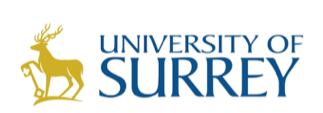
On Monday, April 2 SpaceX is scheduled to launch the 14th Commercial Resupply Services flight to the International Space Station (ISS) via the Dragon spacecraft on a Falcon 9 rocket.
On board this flight will be a number of payloads sponsored by the ISS National Laboratory (managed by the Center for the Advancement of Science in Space) focusing on life sciences, biotech, and new facilities to engage further utilization of the ISS National Laboratory.
The payloads represent a diverse combination of science, technology, and the validation of new facilities that will contribute to greater research capacity in the future. The life science implications of these experiments have the potential to be groundbreaking within the medical community, benefiting human life on Earth. A few highlights of this mission include:
Small Satellite Technologies/Cube Satellite Remove Debris
A project/partnership, NanoRacks, is in partnership with Surrey Space Centre and University of Surrey. The amount of space debris orbiting the Earth is a growing problem. Collisions of orbiting space debris can create even more debris, which could damage the satellites and other spacecraft. This project will use the NanoRacks RemoveDEBRIS satellite platform to deploy two CubeSats as artificial debris targets to demonstrate four technologies for debris removal (net capture, harpoon capture, vision-based navigation).

Could a net and a harpoon be the answer to the space junk problem? RemoveDEBRIS set to launch on April 2.
An Active Debris Removal (ADR) mission designed to demonstrate technologies to remove space junk is due to be launched on Monday 2 April from the Kennedy Space Center to the International Space Station.
The RemoveDEBRIS mission, which has been designed and manufactured by a consortium of leading space companies led by the University of Surrey and funded by the European Commission, is one of the world’s first concrete steps to clean up the estimated 40,000 pieces of space junk currently orbiting Earth.
A SpaceX Falcon 9 rocket will propel and deliver the RemoveDEBRIS satellite to the International Space Station, where it will be deployed, via the NanoRacks Kaber system, to conduct a series of experiments that will demonstrate cost effective technologies that can be used to observe and capture space debris.
Once in orbit the ADR experiments on board the spacecraft will be performed. In the first of two capture experiments, a net will be discharged at one of the deployed target cubesats to demonstrate net capture in space. The second capture experiment will see a harpoon launched at a deployable target plate, made of representative satellite panel materials – the first harpoon capture in orbit. The third experiment involves vision-based navigation by deploying the second cubesat and demonstrating rendezvous navigation using cameras and a LiDaR. Finally, the RemoveDEBRIS spacecraft will deploy a large dragsail to speed de-orbit, where it will burn up as it enters Earth’s atmosphere.
The US Space Surveillance Network tracks 40,000 objects and it is estimated that there are more than 7,600 tonnes of space junk in and around Earth’s orbit - with some moving faster than a speeding bullet, approaching speeds of 30,000 miles per hour.
Professor Guglielmo Aglietti, Director of the Surrey Space Centre at the University of Surrey, said: “It is important to remember that a few significant collisions have already happened. Therefore, to maintain the safety of current and future space assets, the issue of the control and reduction of the space debris has to be addressed.
“We believe the technologies we will be demonstrating with RemoveDEBRIS could provide feasible answers to the space junk problem - answers that could be used on future space missions in the very near future.”
Aurélien Pisseloup, Space Engineer at Airbus, said: "Airbus has been investing in new technologies for space debris removal in co-operation with space agencies and institutes. Contributing to this exciting mission with our expertise and concretely with our harpoon, net experiments and vision based navigation (VBN) moves the international space community one big step forward in tackling space debris."
RemoveDebris is a low-cost mission funded jointly by the European Commission (EU) and 10 partners. Surrey Space Centre (University of Surrey) leads the consortium. The consortium consists of: Airbus, the world’s second largest space company; Ariane Group (France); Surrey Satellite Technology Ltd, the world leader in small satellites (UK); Innovative Solutions In Space (Netherlands); CSEM (Switzerland); Inria (France); Stellenbosch University (South Africa).
Science Minister, Sam Gyimah, said: “Space debris is a growing concern so it’s great to see a British university and our innovative space sector leading the way in the search for solutions. It is also a fantastic example of the unique expertise found in the UK’s growing space sector and the value that it adds to international projects.
“The UK Space Agency continues to work closely with industry to develop new technologies and infrastructure to grow our share of the global space market as part of our modern Industrial Strategy.”
The research leading to these results has received funding from the European Union Seventh Framework Programme (FP7/2007-2013) under grant agreement n°607099.

